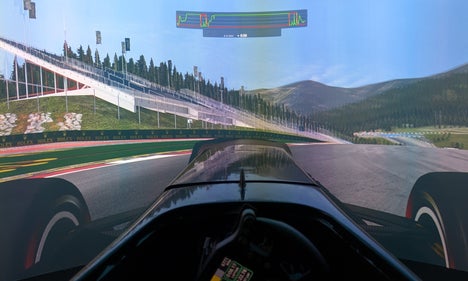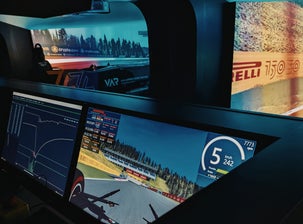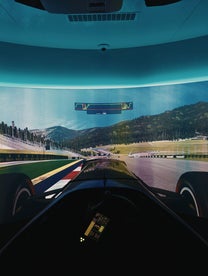Motorsport is evolving all the time, not just on the track, but also outside of it. While some racers battle it out on tarmac circuits around the globe, a new generation of drivers is chasing victory from the comfort of their own home using sim-racing rigs. But how different is sim racing from real racing? And where do the two worlds overlap?

Van Amersfoort Racing
Sim racing
The virtual world of racing can be explored through sim racing. With sim racing you can explore the world of racing without actually being in a real race car.
The so-called “sim” can be used in many ways, like professionally by racing drivers or for fun by amateur racers. Racing drivers use the sim to refine driving skills, practise overtaking, learn more about the circuit or test a new car or car setup. This ensures that they are ready to race on a real circuit when the time comes. Even the absolute top of the motorsport uses the sim, Max Verstappen uses the sim so much that his team, Red Bull racing, told him to limit the amount of time he spends in the simulator.
Sim racers use steering wheels, pedals, and even full-motion rigs to mimic the real experience as closely as possible. Some simulators are so accurate that even Formula 1 drivers use them to prepare for actual races. The sim can also be used to virtually take part in all kinds of championships where they can race against other drivers, some of which are on the other side of the world.
Also, sim racing can be the perfect first step to a real racing career. A driver like Jann Mardenborough started his career in a simulator, but now race on a real circuit. He went from racing in the sim, to compete at the highest level in Super GT, Super Formula and the FIA World Endurance Championship.
Professional sim racing
Sim racing has also become a professional career path of its own. Formula 1 teams hire simulator drivers, who support the race team during a Grand Prix weekend. While the main drivers are out on track, these sim drivers spend hours in the factory simulator, testing different setups and strategies. The information they generate is directly shared with the engineers at the circuit, meaning the final race setup is not only decided on track, but also behind the scenes in the simulator.

Van Amersfoort Racing
Another professional sim career path is the F1 Esports Series. Since 2017 official Formula 1 teams compete with their own esports team in a world championship. These virtual races are broadcast live and attract millions of viewers worldwide. F1 Esports has grown into a professional and competitive sport with official F1 teams, big prices and both a constructors and drivers championship.
Real racing
Real racing is way more than just steering and hitting the gas pedal. It’s an absolute physical and mental challenge where concentration, endurance and precision are much needed. The drivers have to deal with extreme g-forces, insanely high speeds and constantly changing circumstances, like tire degradation, fuel management, pitstops and the weather. A lot of these things do not play any part with sim racing.
The differences and similarities
Sim racing keeps getting more realistic due to highly advanced technology. Simulators imitate driving behaviour, tire degradation and damages to the car. Yet there remains some differences. In a simulator you don’t feel any g-force or car vibrations. During real racing your body plays a huge part, from the strength you need to keep your head straight to the heat in the car caused by the engine.


Probably one of the biggest differences is the amount of money it takes. A good sim setup is the fraction of the price that a real racing car costs. The sim gadgets are not even comparable to the price tags on fuel, tires and maintenance when you race in a real car.
Sim racing is also very safe, while real racing can be quite dangerous. In the sim you can crash and just start over, while when you crash in a real race car there can be heavy consequences.
Which one is better?
Both sim racing and real racing have their charm. Where real racing is unbeatable regarding adrenaline and the feeling of real raw speed, sim racing offers accessibility and safety. So which is better? Maybe the ultimate option is a combination of both. Training in the simulator and racing on a track.
In the end, sim racing might never fully replace the thrill of real racing, but together they push motorsport into an exciting new era.



Add comment
Comments